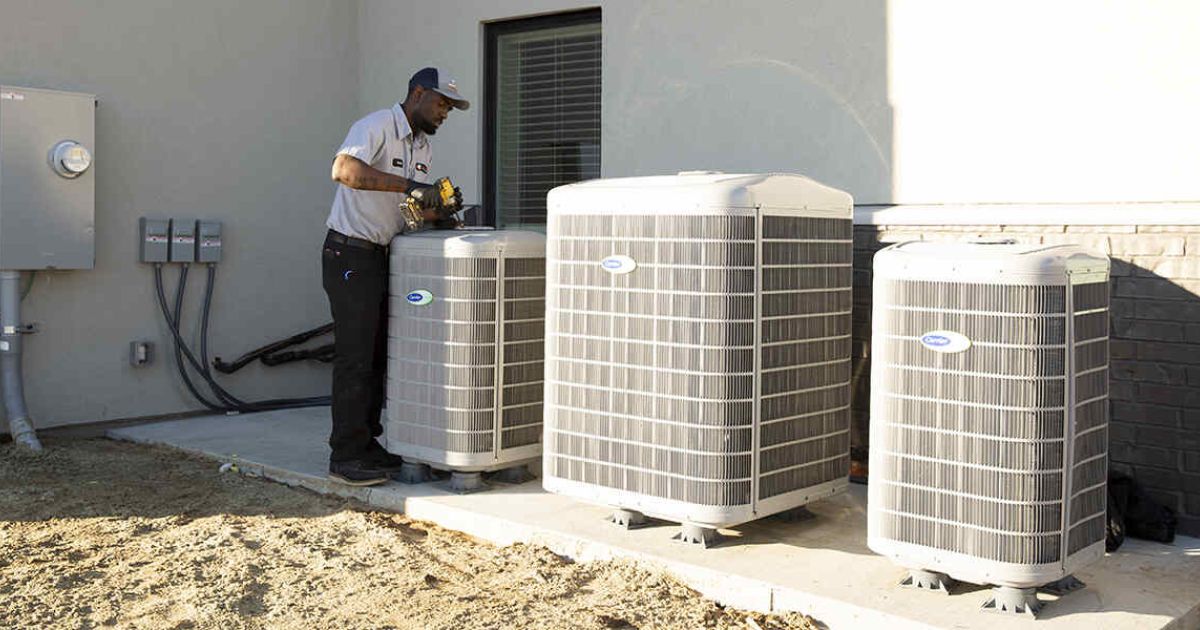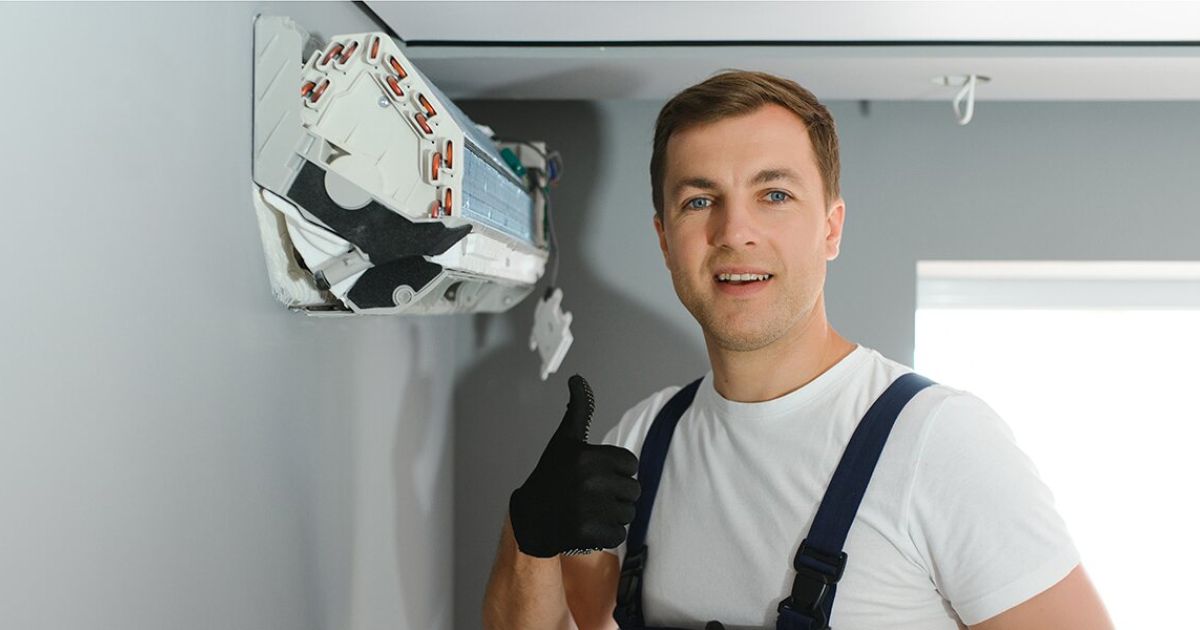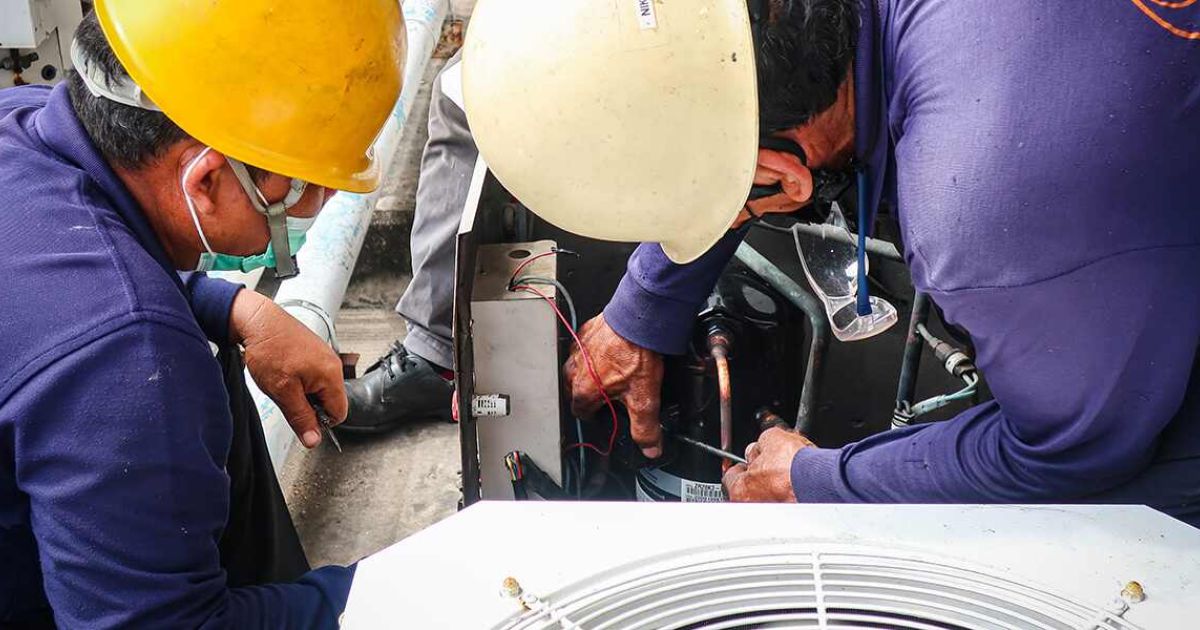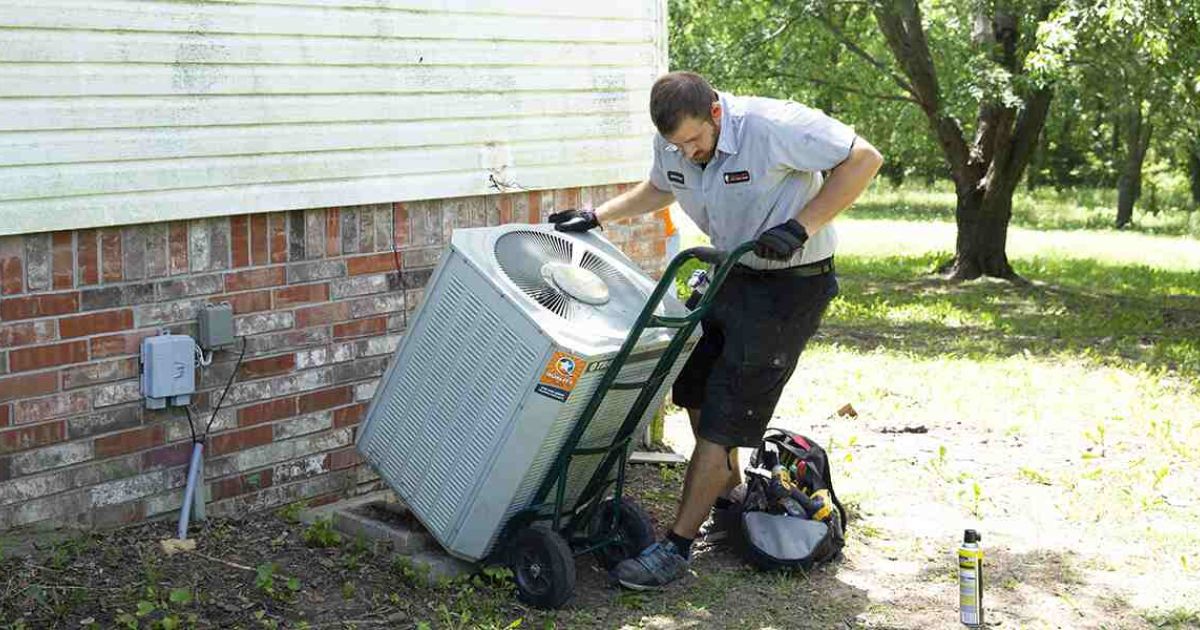How to Choose the Right Central Air System for Your Home


Where do you begin when choosing the right central air system for your home? You’ll want to start by evaluating your home’s size, ensuring you accurately measure room dimensions and calculate square footage. But that’s just the tip of the iceberg. Understanding energy efficiency through SEER ratings and considering your local climate will also play significant roles. By examining different system types and checking compatibility with existing ductwork, you’ll be on your way to making a well-informed decision. Are you curious about the other steps involved and how they can further improve your choice?
Assess Your Home’s Size
Before selecting a central air system, you must accurately measure your home’s square footage. Start by measuring the dimensions of each room of your house. Use a tape measure to determine the length and width of each room, then multiply these numbers to get the room’s square footage. For example, if a room is 12 feet by 15 feet, the square footage is 180 square feet. Do this for every room, including hallways and closets.
After calculating the square footage for each room, add all these numbers together to get the total square footage of your home. This total is important because central air systems are rated based on the space they can effectively cool. If your home’s square footage isn’t accurate, you might end up with a system that’s too small or too large, which can cause problems.
Once you have the total square footage, consider the room dimensions and any unique features of your house, like high ceilings or large windows, which might affect cooling efficiency. Knowing your home’s exact size will help you choose a system that provides ideal comfort and efficiency.
Understand Energy Efficiency Ratings
Understanding energy efficiency ratings is crucial for selecting a central air system that balances performance and cost. One of the most important ratings is the SEER rating, which stands for Seasonal Energy Efficiency Ratio. The SEER rating measures how efficiently an air conditioning unit operates over a typical cooling season. The higher the SEER rating, the more energy-efficient the system is, which means lower energy consumption and reduced utility bills.
When comparing central air systems, pay close attention to their SEER ratings. Federal regulations require all new air conditioners to have a SEER rating of at least 13, but you can find units with ratings as high as 25. While units with higher SEER ratings might cost more upfront, they’ll save you money in the long run by consuming less energy.
You should also consider the EnergyGuide label on most appliances, which provides estimated annual energy consumption and operating costs. This label helps you compare different models and choose the most efficient for your needs. By understanding these ratings, you can make a well-informed choice that benefits your wallet and the environment.
Consider Climate and Location
When selecting a central air system, it’s important to consider your local climate and specific conditions. Different weather patterns and humidity levels can greatly impact its performance in your home.
If you live in a region with hot, dry summers, you’ll need a system to handle high temperatures efficiently without excessive energy use. Conversely, if your area experiences high humidity, your system must be capable of effectively removing moisture from the air to keep your home comfortable.
You should also consider seasonal changes in your local weather patterns. Areas with extreme temperature fluctuations may require a more robust system to handle heating and cooling needs. Additionally, coastal locations with salty air may need systems with corrosion-resistant components to ensure longevity.
Remember to consider your home’s specific conditions. For example, houses with lots of natural shade might not need as powerful a system as those in direct sunlight. Considering your local climate and location, you’ll be better equipped to choose a central air system to make your home comfortable year-round.
Evaluate System Types
Choosing the right central air system can significantly improve your home’s comfort and energy efficiency. When evaluating system types, you’ll encounter a few common options: split systems, packaged systems, and heat pumps. Each has its cooling methods and benefits.
Split systems are the most popular. They consist of an outdoor and indoor unit connected by refrigerant lines. These systems are efficient and can cool larger homes effectively. On the other hand, packages house all components in a single outdoor unit. They’re ideal for homes with limited indoor space and offer cooling and heating capabilities.
Heat pumps are another option to explore. They work by transferring heat rather than generating it, making them energy-efficient. Heat pumps can cool and heat your home, which can be a great year-round solution, especially in moderate climates.
When selecting among these system types, consider your specific cooling needs, the size of your home, and your budget. Each system has different installation and maintenance requirements, so it’s crucial to weigh the pros and cons of each. Understanding these cooling methods will help you make a well-informed choice for your home.
Check Compatibility With Ductwork
Confirm that your central air system is compatible with your existing ductwork to avoid costly modifications. Start with a thorough duct inspection. This step helps you identify leaks, blockages, or damages hindering the new system’s performance. If your ducts are in poor condition, you must address these problems before installation.
Next, verify airflow compatibility. Different central air systems require varying levels of airflow to function efficiently. Check if your current ductwork can handle the new system’s requirements. For instance, if your new system needs higher airflow but your ducts are too small, it could reduce efficiency and increase wear and tear on your system.
Consider the age and material of your ductwork. Older ducts, especially those made from outdated materials, might not be suitable for modern systems. If your ducts are too old, it may be more cost-effective to replace them altogether.
Lastly, consult a professional HVAC technician for an in-depth assessment. They can provide expert advice on whether your existing ductwork is compatible with your chosen central air system, ensuring a smooth and efficient installation process.
Determine Your Budget
After ensuring your ductwork is compatible, it’s important to establish a clear budget for your central air system. Begin by considering the initial purchase price, which can vary widely depending on the brand and features. Don’t forget to include installation costs in your budget, as professional installation is essential for best performance.
Next, break down the costs into manageable parts. You should factor in the price of the unit itself, labor costs for installation, and any potential modifications to your home. Additional expenses like permits or electrical upgrades might also come into play. It’s a good idea to get multiple quotes to understand the range of costs you might face.
Consider your financing options if the upfront cost is challenging. Many companies offer financing plans that allow you to spread out payments over several months or even years. This can make a high-quality system more affordable by breaking the cost into monthly installments.
Look for Smart Features
When selecting a central air system, prioritize models offering smart features to improve convenience and efficiency. One of the main features to look for is voice control. With voice control, you can adjust the temperature, switch the system on or off, and even set specific cooling schedules using your voice. This feature can be extremely useful, especially if you’re busy with other tasks or simply want a hands-free experience.
Another crucial smart feature is a programmable thermostat. A programmable thermostat allows you to set different temperatures for various times of the day. For instance, you can program it to cool your home just before you return from work, ensuring comfort without wasting energy throughout the day. This saves you money on energy bills and reduces your environmental footprint.
Many modern systems also have mobile apps letting you control the air conditioning remotely. This means you can adjust even when you’re not home, adding an extra convenience layer. Choosing a central air system with smart features like voice control and a programmable thermostat will improve your comfort and your home’s energy efficiency.
Plan for Professional Installation
Once you’ve chosen your ideal central air system, planning for professional installation is essential to guarantee peak performance and longevity. Hiring licensed contractors ensures that the job is done correctly and safely. Here are some steps to help you through the installation process:
- Research Licensed Contractors: Start by looking for licensed contractors in your area. Check online reviews, ask for recommendations, and verify their credentials. This will help you find a reliable professional.
- Get Multiple Quotes: Don’t settle for the first estimate you receive. Collect quotes from at least three different contractors. This allows you to compare prices and services, ensuring you get the best value for your money.
- Review the Installation Process: Discuss the installation process with your chosen contractor. Ensure you understand what will be done, how long it will take, and what preparations you must make before they start.
- Schedule the Installation: Once you’ve selected a contractor, schedule the installation conveniently. Ensure you or another responsible adult is present during the installation to address any questions or concerns.
Conclusion
Choosing the right central air system for your home involves several key steps. First, assess your home’s size and calculate square footage accurately. Understand energy efficiency ratings to save on costs and consider your local climate. Evaluate different system types and check compatibility with your existing ductwork. Determine your budget and look for smart features to improve convenience. Finally, plan for professional installation by licensed contractors to guarantee your system runs efficiently and safely.
Frequently Asked Questions
How Can I Maintain My Central Air System for Optimal Performance?
Regularly clean or replace your filters to maintain your central air system for peak performance. Schedule seasonal inspections with a professional to ensure everything’s running smoothly and catch any potential issues early.
What Are the Common Signs My Central Air System Needs Replacement?
You’ll notice increased noise, frequent repairs, and higher energy bills. Your home won’t cool evenly, and the system might be over 10 years old. These signs indicate it’s time to contemplate replacing your central air system.
Are There Any Health Benefits to Using a Central Air System?
A central air system offers health benefits like improved ventilation and allergen reduction. It allows you to breathe cleaner air, reducing the risks of respiratory issues and allergies. It’s a great way to maintain a healthier indoor environment.
How Do I Troubleshoot Common Central Air System Issues?
To troubleshoot common central air system issues, start with leak detection to ensure no refrigerant is lost. Next, check the thermostat calibration for accuracy. If problems persist, you might need professional help to avoid further damage.
What Warranties or Guarantees Should I Look for With a New System?
Isn’t it funny how things break right after the warranty ends? Look for a reliable manufacturer warranty and an installation guarantee. These ensure you’re covered if the system falters when you need it most.

Cassie Pound is the Vice President of Quality Heating, Cooling, Plumbing & Electric with locations in Tulsa, Glenpool, and Bartlesville, Oklahoma.





